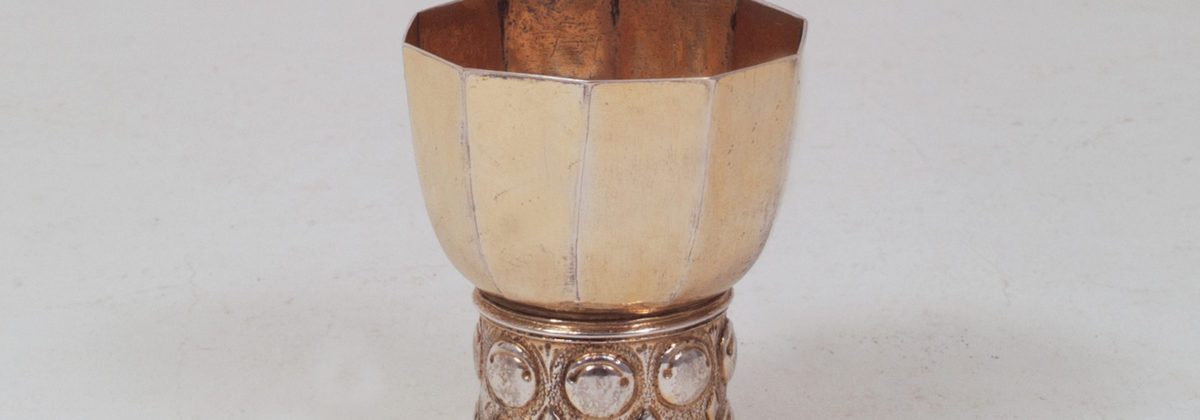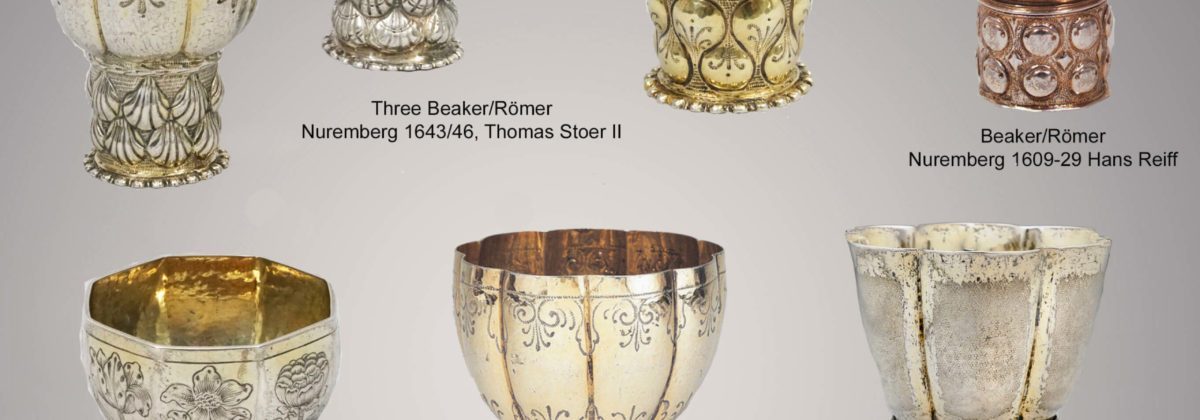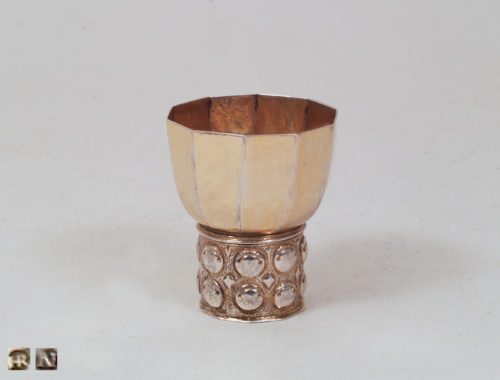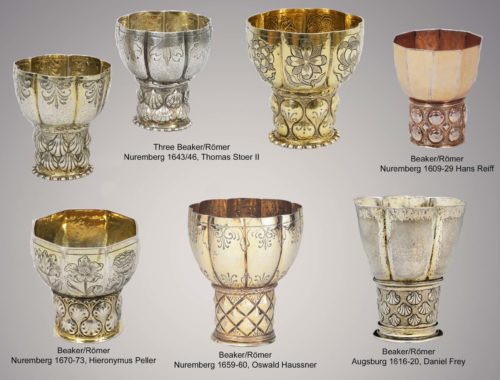Detailed Information
Antique Silver-Gilt Wine-Goblet (Roemer)
The present beaker is a wine-goblet; due to its special shape it belongs to the so called „Roemer“.
The foot and shaft of the silver cup are merging into each other. The round, narrow foot is recognizable by a slight profiling. The cylindrical punched shaft is raised directly from the foot and is adorned with smooth round prunts arranged in two rows. Between those little circles, there is a row with smooth rhombuses applied to the shaft.
The nine-angular, slightly conical bowl is raised above the shaft and they are connected with a small rand. The walls of the bowl are without any decor. The original gilding is partly rubbed off by the natural traces of use. The hallmark, the maker’s mark and the zigzag scratch are placed underneath the foot.
History of the „Roemer“
The shape of the Roemer is derived from a medieval glass form. They are mentioned in the literature since the mid-fifteenth century. In the seventeenth century, the Roemer was given its typical shape: a trailed thread round and conical foot, a cylindrical prunted middle section (shaft), and a large rounded bowl. The drinking vessel was mainly used in Central and Northern Europe. In Dutch still life from the seventeenth century, Roemer made of glass are often seen. It is also known that in the seventeenth century large quantities of Roemer were made of glass, especially in Holland, Bohemia and England.
Maker
Hanns Reiff was a goldsmith originated from Nuremberg, who became a master maker in 1609. He married for the first time in 1611 and swore the goldsmith’s oath. His works are preserved in the Kremlin in Moscow, in the Kunstgewerbemuseum of the State Collections in Dresden (Museum of Decorative Arts), the Victoria & Albert Museum in London, the Hermitage in St. Petersburg, the Mainfränkisches Museum in Würzburg, and others. He died in 1633.
Literature
Theuerkauff-Liederwald, A.-El., ‚Der Römer: Studien zu einer Glasform, I – II’, In: Journal of Glass Studies, Bd. X, 1968, p. 114-155 & Bd. XI, 1969, p. 43-69
Karin Tebbe: Nürnberger Goldschmiedekunst 1541 – 1868. Teil 1: Textband. 2 Bände. Bd. 1. Nürnberg 2007, p. 330-332 No. 697
Rosenberg, Marc: Der Goldschmiede Merkzeichen. 1928, No. 4133 und 4134





